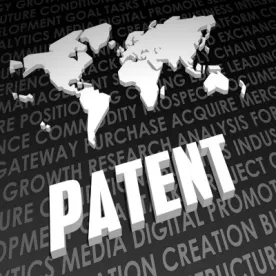I. Introduction
Patent Prosecution Highway or PPH is a set of initiatives promulgated by participating patent offices around the world to accelerate patent prosecution in countries of the participating patent offices. PPH allows the participating patent offices to share information and to benefit from work performed by other participating patent offices, and thereby reducing examination workload and improving quality of patents.
Under PPH, prosecution of a patent application previously filed with a participating patent office can be fast-tracked in another participating patent office if the patent application meets certain requirements. This article provides a brief overview of benefits of filing patent applications under PPH and requirements by which the patent applications must satisfy in order to participate in PPH.
II. Benefits of Participating in PPH
Filing patent applications under PPH can drastically reduce time it takes to prosecute the patent applications. For example, according to statistics released by China National Intellectual Property Administration (CNIPA), an average time to prosecute patent applications filed under PPH, from initial filing to receiving a final decision (e.g., allowance or abandonment), is approximately 11.9 months. In contrast, an average time to prosecute non-PPH patent applications is approximately 22.7 months[1]. Further, according to the statistics, applicants can expect to receive an initial office action in just 2.7 months after filing PPH patent applications – compared with 12.5 months for non-PPH patent applications. Moreover, filing patent applications under PPH may provide cost savings to applicants since PPH patent applications need, on average, just one office action before issuance. Finally, an average allowance rate for PPH patent applications is approximately 87.8%, whereas an average allowance rate for non-PPH patent applications is approximately 76.1%.
Patent applications filed under PPH with the US Patent and Trademark Office (USPTO) enjoy similar benefits. For example, in the US, applicants can expect to receive an initial office action from the USPTO within 2 months of filing. Whereas, for non-PPH patent applications, it takes about a year or so to receive an initial office action from the USPTO. As evident, filing patent applications under PPH provides many benefits. As such, when considering filing patents internationally, applicants are encouraged to inquire whether patent applications can be filed under PPH in countries of interest.
III. Eligibility Requirements for PPH
Although requirements to participate in PPH in each of the participating patent offices may differ slightly, some general rules apply. To be eligible for PPH at a participating patent office of interest, at time of filing, applicants are required to show that: (1) a related patent application has been determined by a participating patent office to be patentable; (2) the related patent application includes at least one patentable claim; and (3) claims of the patent application must sufficiently correspond to the allowed claims of the related patent application. Once these requirements are met, applicants can apply for PPH by filing a PPH request and providing the participating patent office of interest: (1) copies of all correspondences of the related patent application; (2) a copy of the allowed claims of the related patent application; and (3) a claim correspondence table indicating relatedness between the claims of the patent application and the allowed claims of the related patent application. A survey of PPH requirements for various countries is provided below.
A. United States
The USPTO is a participant of PPH. Requirements for participating in PPH in the United States are as follow: (1) US application shares same earliest date with corresponding Offices of Earlier Examination (OEE) application; (2) the OEE application has been determined to contain at least one patentable claim; (3) claims of the US application filed with the USPTO sufficiently correspond to claims deemed to be patentable in the OEE application; and (4) substantive examination of the US application has not begun.
If the above requirements are met, applicants can file a PPH request with the USPTO. The PPH request must be accompanied by: (1) the allowable claims of the OEE application; (2) a list of references cited during prosecution of the OEE application; (3) copies of non-patent literature references cited during prosecution of the OEE application; (4) a claim correspondence table showing sufficient correspondence; and (5) copies of correspondences that are relevant to substantive examination for patentability.
B. China
The CNIPA is a participant of PPH. Requirements for participating in PPH in China are as follow: (1) Chinese application shares same earliest date with corresponding Offices of Earlier Examination (OEE) application; (2) the Chinese application must have been published; (3) the OEE application has been determined to contain at least one patentable claim; (4) claims of the Chinese application filed with the CNIPA sufficiently correspond to claims deemed to be patentable in the OEE application; and (5) substantive examination of the CNIPA application has not begun.
If the above requirements are met, applicants can file a PPH request with the CNIPA. The PPH request must be accompanied by: (1) Chinese translations of the allowable claims of the OEE application; (2) a list of references cited during prosecution of the OEE application; (3) copies of non-patent literature references cited during prosecution of the OEE application; (4) a claim correspondence table with explanations; and (5) copies of correspondences that are relevant to substantive examination for patentability.
C. European Union
The European Patent Office (EPO) is a participant of PPH. Requirements for participating in PPH in countries of the European Union are as follow: (1) European application shares same earliest date with corresponding Offices of Earlier Examination (OEE) application; (2) the OEE application has been determined to contain at least one patentable claim; (3) claims of the European application filed with the EPO sufficiently correspond to claims deemed to be patentable in the OEE application; and (4) substantive examination of the European application has not begun. Generally, EPO considers claims to have sufficient correspondence when claims of OEE applications are of the same or similar scope to claims of European applications or claims of European applications are narrower in scope than claims of OEE application.
If the above requirements are met, applicants can file a PPH request with the EPO. The PPH request must be accompanied by: (1) copies of OEE work products (or latest work products of a PCT application in international phase); (2) a copy of claims determined to be patentable by the OEE; and (3) copies of non-patent documents cited in the OEE work products. These documents need to be in at least one of the official languages of the European Union, i.e., English, French, and German. Machine translations of applications in one of the official languages of the European Union are okay. However, if the EPO determines that the machine translations are inadequate, the EPO may request official translations.
Although examination results of international applications can be basis for a PPH request before EPO, applications for which the EPO was the International Searching Authority (ISA) and International Preliminary Examining Authority (IPEA) are not eligible for PPH before the EPO. This is because there is no work product that can be considered as work done by “another” office.
D. Singapore
The Intellectual Property Office of Singapore (IPOS) is a participant of PPH. Requirements for participating in PPH in Singapore are as follow: (1) IPOS application and corresponding Offices of Earlier Examination (OEE) application shall have the same earliest date (i.e., same priority date or filing date); (2) the OEE application has at least one claim that has been determined to be patentable by the OEE; (3) all claims in the IPOS application must sufficiently correspond or amended to sufficiently correspond to one or more claims determined to be patentable by the OEE; and (4) examination has not begun on the IPOS application.
If the above requirements are met, applicants can file a PPH request with the IPOS. The PPH request must be accompanied by: (1) copies of all office actions in the OEE application; (2) a copy of allowed claims of the OEE application; and (3) a claim correspondence table showing relatedness of the allowed claims to claims of the IPOS application. Copies of prior art references cited during prosecution of the OEE application are not required at the time of the PPH request. However, the IPOS may request applicants to provide copies of subsequently cited prior art references. Moreover, if the OEE application and the allowed claims are not in English, English translations must be filed with the PPH request. However, these translations do not need to be certified.
FOOTNOTES
[1] http://ip.people.com.cn/n1/2019/0710/c179663-31225443.html







 />i
/>i
